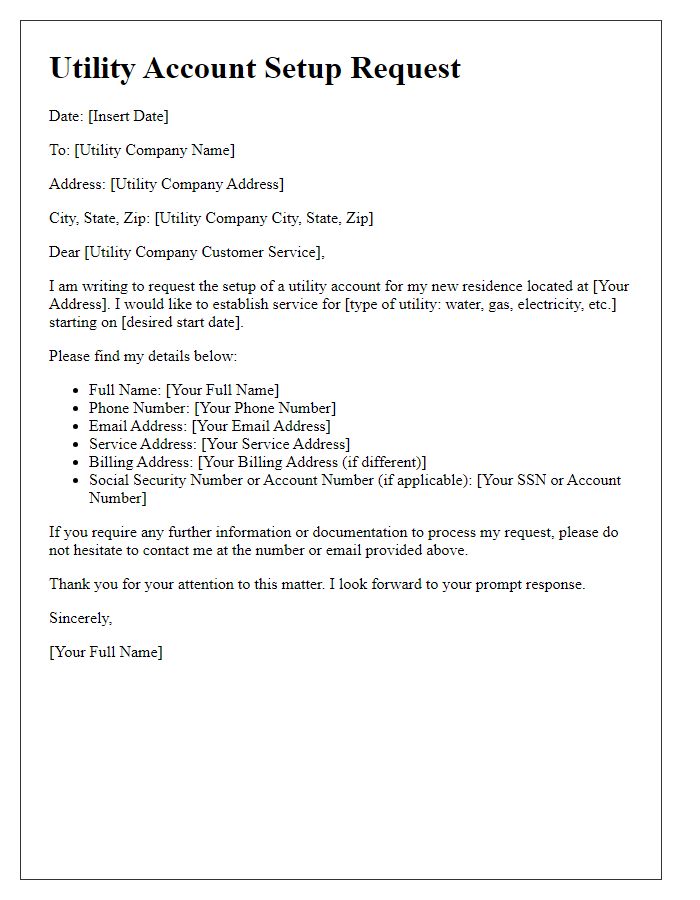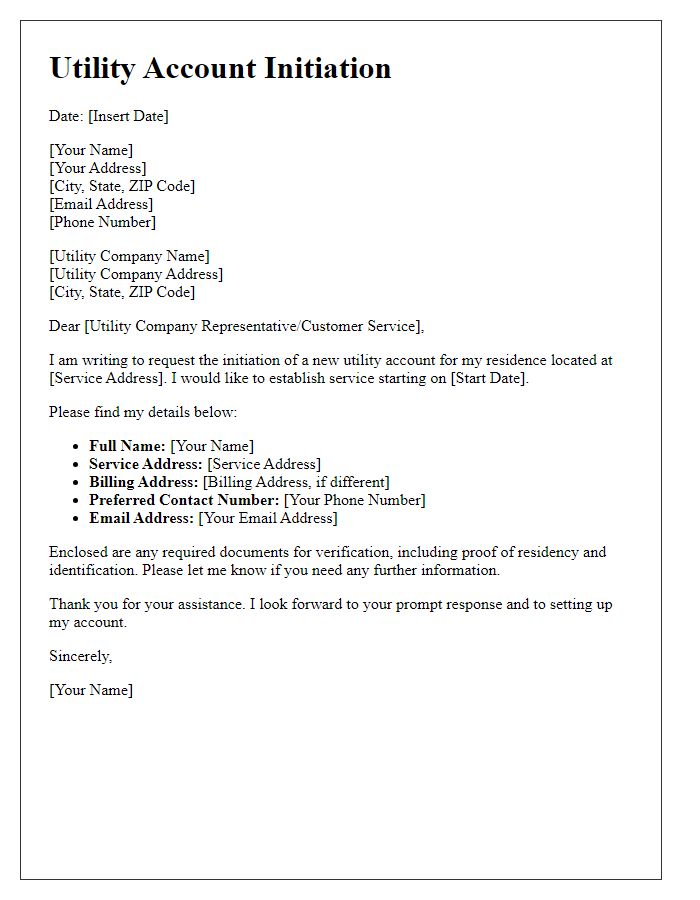Setting up a new utility account can often feel overwhelming, but it doesn't have to be. Whether you've just moved into a new home or switched providers, understanding the process can make it a breeze. In this guide, we'll walk you through all the essential steps, from gathering necessary documentation to finalizing your account details. So, grab a cup of coffee and dive in to discover how easy it can be to get your utilities running smoothly!

Contact Information
Setting up a new utility account requires precise contact information to ensure proper service delivery. The customer's full name, such as John Smith, must be recorded accurately. A valid mailing address, including the street number and name, city (e.g., Springfield), state (e.g., IL), and ZIP code (e.g., 62701), should be provided. A primary phone number, preferably a mobile number like (555) 123-4567, is essential for communication about outages or service updates. Additionally, an email address, such as john.smith@email.com, facilitates electronic correspondence and billing notifications. Accurate and complete contact details lead to efficient service initiation and ongoing customer support.
Account Holder Details
Establishing a new utility account requires essential details from the account holder. This includes personal information such as full name, residential address (including street number, city, and zip code), and contact number. Relevant identification numbers (e.g., Social Security Number or driver's license number) are necessary for verification purposes. Additional information, such as email address for electronic communications and preferred billing method (paper or electronic), is also important. It's crucial to specify the type of utility service requested, whether it be electricity, water, gas, or waste management. Lastly, including the move-in date ensures prompt account activation, enabling services to commence without interruption.
Service Address
Setting up a new utility account involves providing specific details about the service address, which is essential for ensuring proper service delivery. The service address refers to the physical location (street number, street name, city, state, ZIP code) where utility services such as electricity, water, or gas will be provided. Details such as nearby landmarks (like public parks or major intersections) can provide clarity. It is crucial to verify accurate information to prevent delays in service initiation. Each utility provider may have different requirements regarding identification and address verification, often requiring documentation like rental agreements or property deeds.
Requested Start Date
Setting up a new utility account involves specifying a requested start date for service initiation, which is essential for coordination with the utility provider. Many utility companies, such as electric, water, or natural gas services, require this date to ensure a seamless transition from a previous account holder or to set up new service at a residential or commercial location. The requested start date helps service providers allocate the necessary resources and schedule potential service installations, such as meter readings or equipment updates. Typically, customers suggest a start date of one to two weeks in advance, allowing sufficient time for processing and arrangements. This proactive approach minimizes any interruptions to essential utility services, critical for home or business operations.
Authorization and Signature
Creating a new utility account involves providing authorization and necessary signatures to set up services. Typically, utility companies like electric, water, or gas services require personal identification details (such as Social Security Number) to verify identity. Documentation might include proof of residence, like a rental agreement or utility bill. Additionally, signature requirements ensure the account is officially recognized, granting permission for the utility company to establish services at a designated address. Important notes include the need for current contact information to facilitate communication and potential billing agreements. Each utility provider may have specific forms and guidelines to follow during the setup process.













Comments